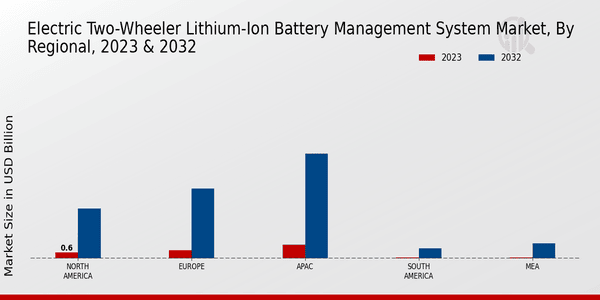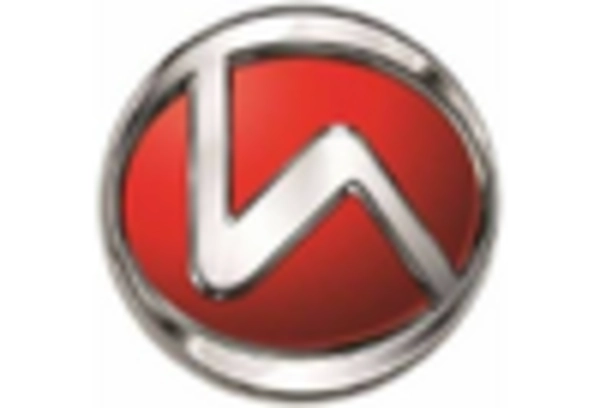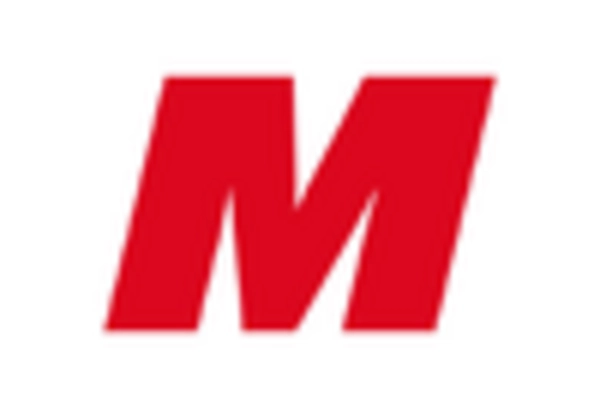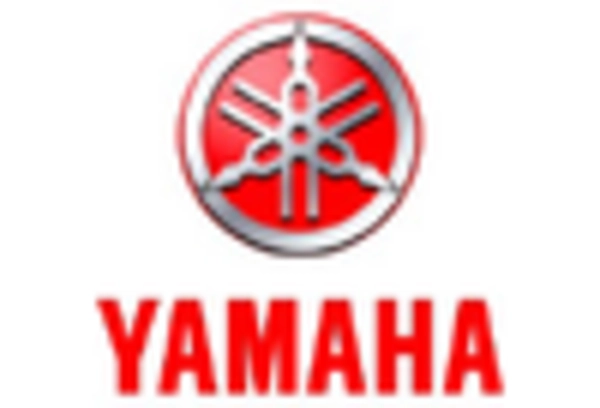Rising Fuel Prices
The rising cost of traditional fuels is a significant driver for the Electric Two-Wheeler Lithium-Ion Battery Management System Market. As fuel prices continue to escalate, consumers are increasingly seeking alternative transportation options that offer cost savings. Electric two-wheelers present a viable solution, as they typically have lower operating costs compared to their gasoline counterparts. This economic incentive is likely to drive a surge in demand for electric two-wheelers, thereby boosting the need for efficient lithium-ion battery management systems. In 2025, the market is expected to reflect this trend, with more consumers opting for electric vehicles as a means to mitigate fuel expenses. Consequently, the Electric Two-Wheeler Lithium-Ion Battery Management System Market is poised for growth, as manufacturers respond to this shift in consumer behavior.
Growing Environmental Awareness
Increasing environmental awareness among consumers is a pivotal driver for the Electric Two-Wheeler Lithium-Ion Battery Management System Market. As individuals become more conscious of their carbon footprint, the demand for electric two-wheelers is surging. This shift is not merely a trend; it reflects a broader societal movement towards sustainable transportation solutions. In 2025, it is estimated that the market for electric two-wheelers will witness a substantial increase, with a significant portion attributed to environmentally conscious consumers. The Electric Two-Wheeler Lithium-Ion Battery Management System Market is thus positioned to benefit from this growing demand, as efficient battery management systems are essential for maximizing the environmental benefits of electric vehicles. This awareness is likely to drive further investments in battery technology and infrastructure, reinforcing the market's growth trajectory.
Urbanization and Traffic Congestion
Urbanization and increasing traffic congestion are emerging as critical drivers for the Electric Two-Wheeler Lithium-Ion Battery Management System Market. As urban populations swell, the demand for efficient and convenient transportation solutions rises. Electric two-wheelers offer a practical alternative to traditional vehicles, particularly in densely populated areas where traffic congestion is prevalent. The compact nature of electric two-wheelers allows for easier navigation through crowded streets, making them an attractive option for urban commuters. By 2025, it is projected that the market for electric two-wheelers will expand significantly, driven by urbanization trends. This growth will, in turn, necessitate advancements in battery management systems to ensure optimal performance and reliability. The Electric Two-Wheeler Lithium-Ion Battery Management System Market is thus well-positioned to capitalize on these urban mobility challenges.
Government Incentives and Regulations
Government incentives and regulations play a crucial role in shaping the Electric Two-Wheeler Lithium-Ion Battery Management System Market. Many governments are implementing policies aimed at promoting electric mobility, including subsidies for electric vehicle purchases and tax incentives for manufacturers. These initiatives are designed to accelerate the adoption of electric two-wheelers, which in turn drives demand for advanced battery management systems. As of 2025, it is anticipated that these regulatory frameworks will continue to evolve, further supporting the growth of the market. The Electric Two-Wheeler Lithium-Ion Battery Management System Market stands to gain from these favorable conditions, as manufacturers seek to comply with regulations while enhancing their product offerings. This dynamic creates a robust environment for innovation and investment in battery management technologies.
Technological Advancements in Battery Management Systems
The Electric Two-Wheeler Lithium-Ion Battery Management System Market is experiencing rapid technological advancements that enhance battery performance and longevity. Innovations such as advanced algorithms for battery state estimation and thermal management systems are becoming increasingly prevalent. These technologies not only improve the efficiency of lithium-ion batteries but also extend their lifespan, which is crucial for consumer acceptance. As of 2025, the market for battery management systems is projected to grow significantly, driven by the need for more efficient energy storage solutions. The integration of smart technologies, such as IoT connectivity, allows for real-time monitoring and diagnostics, further boosting the appeal of electric two-wheelers. This trend indicates a shift towards more sophisticated battery management solutions, which are essential for the growth of the Electric Two-Wheeler Lithium-Ion Battery Management System Market.


















Leave a Comment